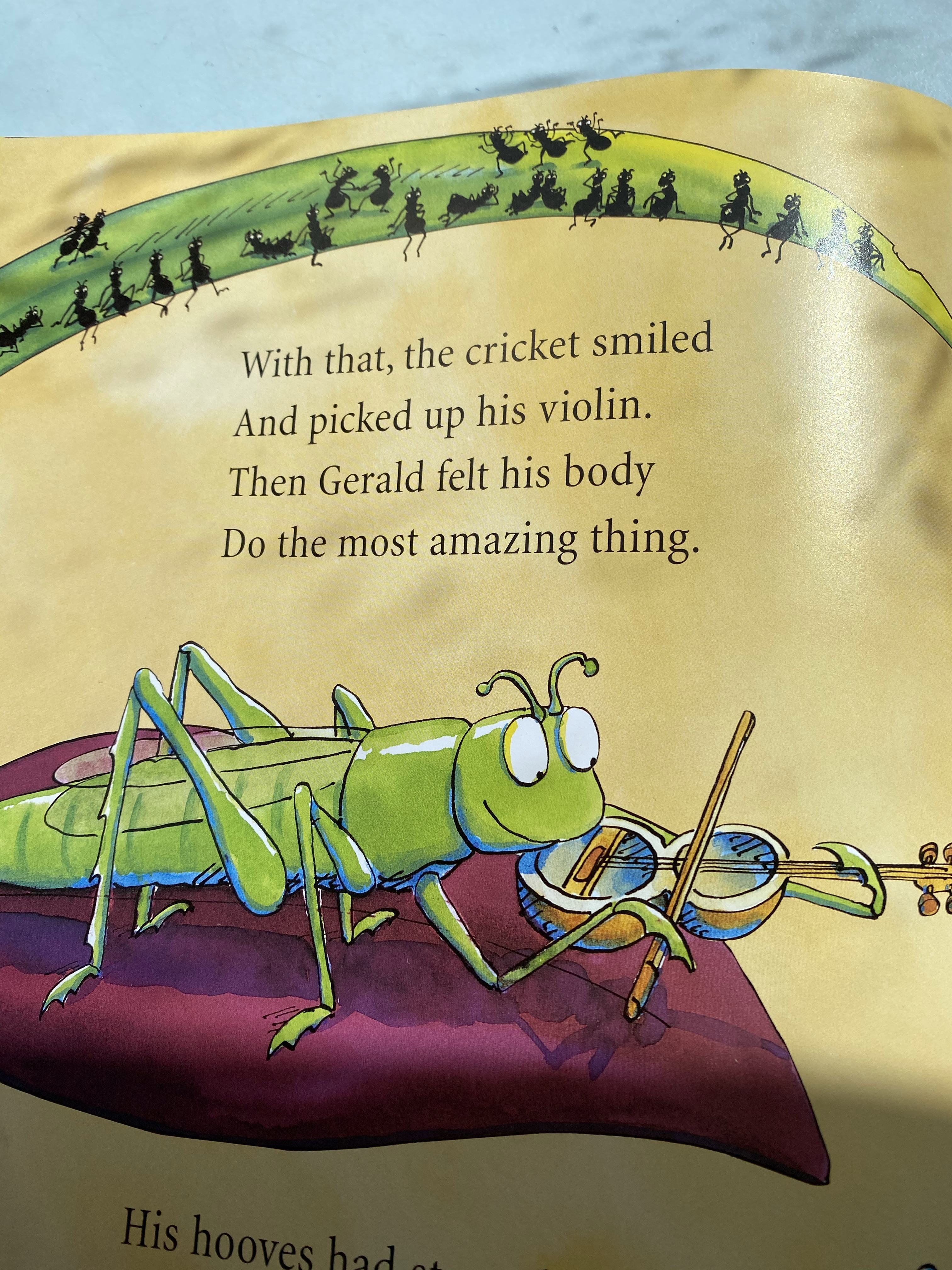“Giraffes Can’t Dance” by Giles Andreae and Guy Parker-Rees is a heartwarming and rhythm-filled book that has become a beloved favorite in many households, including ours at ten-dance.com. This isn’t just a story; it’s an experience, especially when shared with children eager to explore the magic of music and movement.
 Gerald the Giraffe looking unsure at the jungle dance
Gerald the Giraffe looking unsure at the jungle dance
At its core, “Giraffes Can’t Dance” introduces us to Gerald, a giraffe with a dream as big as his neck: to participate in the annual Jungle Dance. However, Gerald feels out of sync with the other jungle animals. He believes he lacks the natural grace and rhythm to truly dance.
 Animals laughing at Gerald trying to dance
Animals laughing at Gerald trying to dance
The narrative beautifully unfolds Gerald’s journey as he faces the sting of criticism and laughter from other animals who seem to move effortlessly. This part of the story gently touches upon the sensitive topic of bullying, showcasing Gerald’s vulnerability and hurt feelings in a way that children can understand and empathize with. It’s a powerful way to open up conversations about kindness and acceptance.
What makes “Giraffes Can’t Dance” particularly special is its inherent musicality. While not explicitly a music education book, the story is written in verse, creating a natural rhythm and flow when read aloud. This lyrical quality transforms story time into a musical experience. In our home, reading this book often turns into an interactive session where we explore different music genres as we encounter them in the story. The jungle animals are described dancing to various styles, providing a perfect opportunity to introduce children to waltzes, tangos, and other rhythms. Sometimes, we even attempt our own silly versions of these dances, leading to lots of laughter and engagement – especially when Mummy tries to tango!
 Gerald looking sad and isolated after being laughed at
Gerald looking sad and isolated after being laughed at
The turning point in “Giraffes Can’t Dance” comes with the wise words of a cricket playing the violin. This insightful character helps Gerald realize that he doesn’t need to dance like everyone else. He just needs to find his own unique rhythm and way of moving. This is a profound lesson for children about self-expression and celebrating individuality. The cricket essentially guides Gerald to discover his own “music” within, encouraging him to express himself authentically.
 Cricket playing violin helping Gerald to dance
Cricket playing violin helping Gerald to dance
Beyond the engaging storyline and rhythmic text, “Giraffes Can’t Dance” is enhanced by Guy Parker-Rees’ vibrant and expressive illustrations. The artwork perfectly captures the emotions of Gerald and the energy of the jungle, making the story visually captivating for young readers. The combination of lyrical language and lively pictures makes this book a treat for both the ears and the eyes.
What we truly appreciate about “Giraffes Can’t Dance,” and why it earns a top spot in our book recommendations, is its ability to seamlessly weave in the importance of music as a tool for self-expression. It subtly teaches children that music and dance are not about conforming to rigid standards, but about finding joy and freedom in movement and rhythm, in whatever way feels natural to them. It’s a brilliant message that resonates deeply, especially in a world that often pressures conformity.
“Giraffes Can’t Dance” has been a cherished book in our collection for years, and it’s readily available in various formats including paperback, board book, and even a sound book version from your favorite book retailers. It’s a book that you will genuinely enjoy reading aloud, time and time again, and one that carries valuable lessons wrapped in a delightful and engaging story.
If this review has inspired you to add “Giraffes Can’t Dance” to your bookshelf, you can find it easily through the link below on Amazon. And just to let you know, as an affiliate, if you purchase through this link, ten-dance.com may receive a small commission, at no extra cost to you. This helps us continue to bring you content like this. Thank you for your support!
